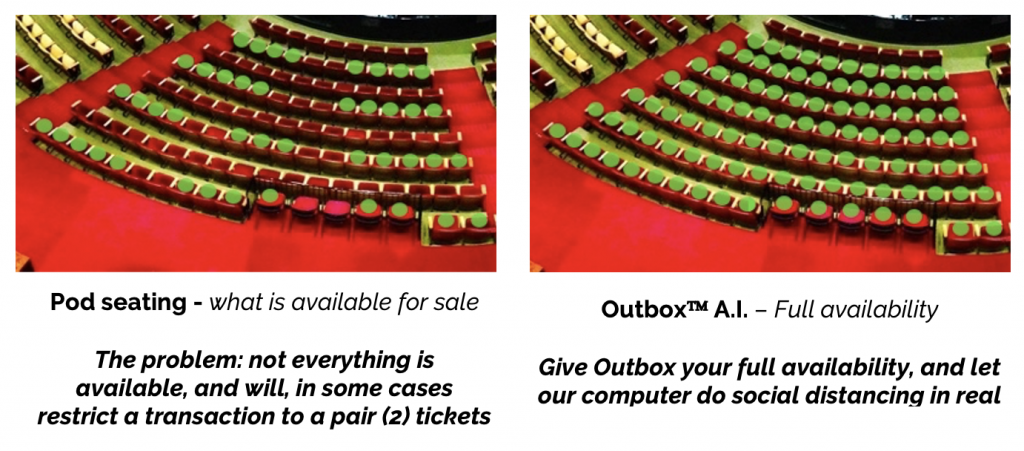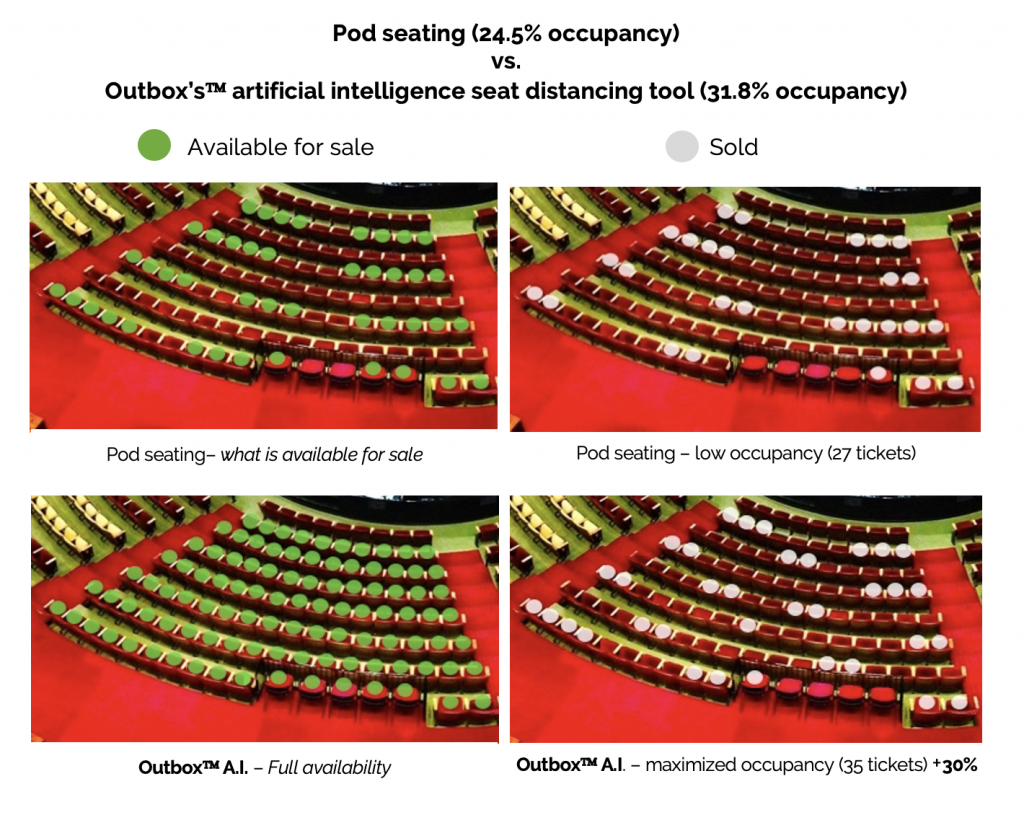REAL TIME SOCIAL DISTANCING INTELLIGENCE
March 09, 2021
SKIP THE PREDETERMINED SEATING ALLOCATIONS
To tackle venue re-openings and social distancing, we believe an algorithm combined with A.I. is better at handling the challenge of on sales and seating allocations. Rather than using predetermined seating allocations, our clients have been reopening their venues using our real-time social distancing solution. Read more about it here and learn how Outbox can optimize seating capacity and revenue for venues.
REAL TIME SOCIAL DISTANCING INTELLIGENCE
For the last 10 months, we’ve been tweaking our seat search engine to adapt to social distancing in live entertainment. To help with the reopening of venues with social distancing, we work with 2 solutions. The first solution is a standard one in the ticketing industry: Using a seating management tool, venues decide in advance the different seat allocations to be sold based on imposed capacity and distance between occupied groups of seats. The second solution is a real-time social distancing algorithm with configurable parameters (distance in seats or vectors, imposed venue capacity, break-even occupancy and other factors).
Solution 1, ticketing in predefined pods:
Let’s look at the first and most common solution. Venue managers configure seating allocations in specific blocks using their seat management tools for all upcoming events. The advantage here is that this can help in determining the revenue/capacity ratio in a fairly simple way and is easy to configure, to adjust, and to understand. There are however numerous disadvantages to this solution. If customers from a same address want to purchase 5 tickets together but allocations are based on pairs, the customers may give up purchasing tickets as the transaction will not allow 5 seats together.\In some cases, a non-contiguous seating option may be proposed.. but here again, the customers may decide not to attend the event as they will not be seated together. In addition, non-contiguous seat sales in predetermined allocations will only increase the number of seats which must then kept vacant for social distancing. Using this inefficient solution, venues will only be able to sell a limited portion of their allocated seats and hence total sales may not meet the expected revised capacity-revenue. We questioned this strategy’s scale as most venues, even those with government subsidies, may not be able to break even and therefore reopen with a capacity limited to 20-25%.

Solution 2, real-time social distancing using A.I.:
We then asked ourselves: What if we built an algorithm that could use artificial intelligence, with data from past events and ticket buyer behavior, combined with real time data from the on sale, to fit the venue’s social distancing parameters? What if we could configure these parameters to predict and optimize how many tickets would be sold in a socially distant context? Instead of using predefined seating pods, an intelligent and real-time seating and selling algorithm gives the ticket buyer access to seats that are social distant, while optimizing seating distance for future ticket buyers, based on past and current event seating demand.

Once the development was completed we started applying our solution to on-sales at some of our client venues. Just by looking at the number of tickets sold for events, the time to sell out, the remaining empty seats, and by analyzing seat map patterns from tickets sold, it was obvious that our optimization solution was successful in increasing attendance and revenue.
To help you optimize your on sales, reach out to us via contact@outbox.com